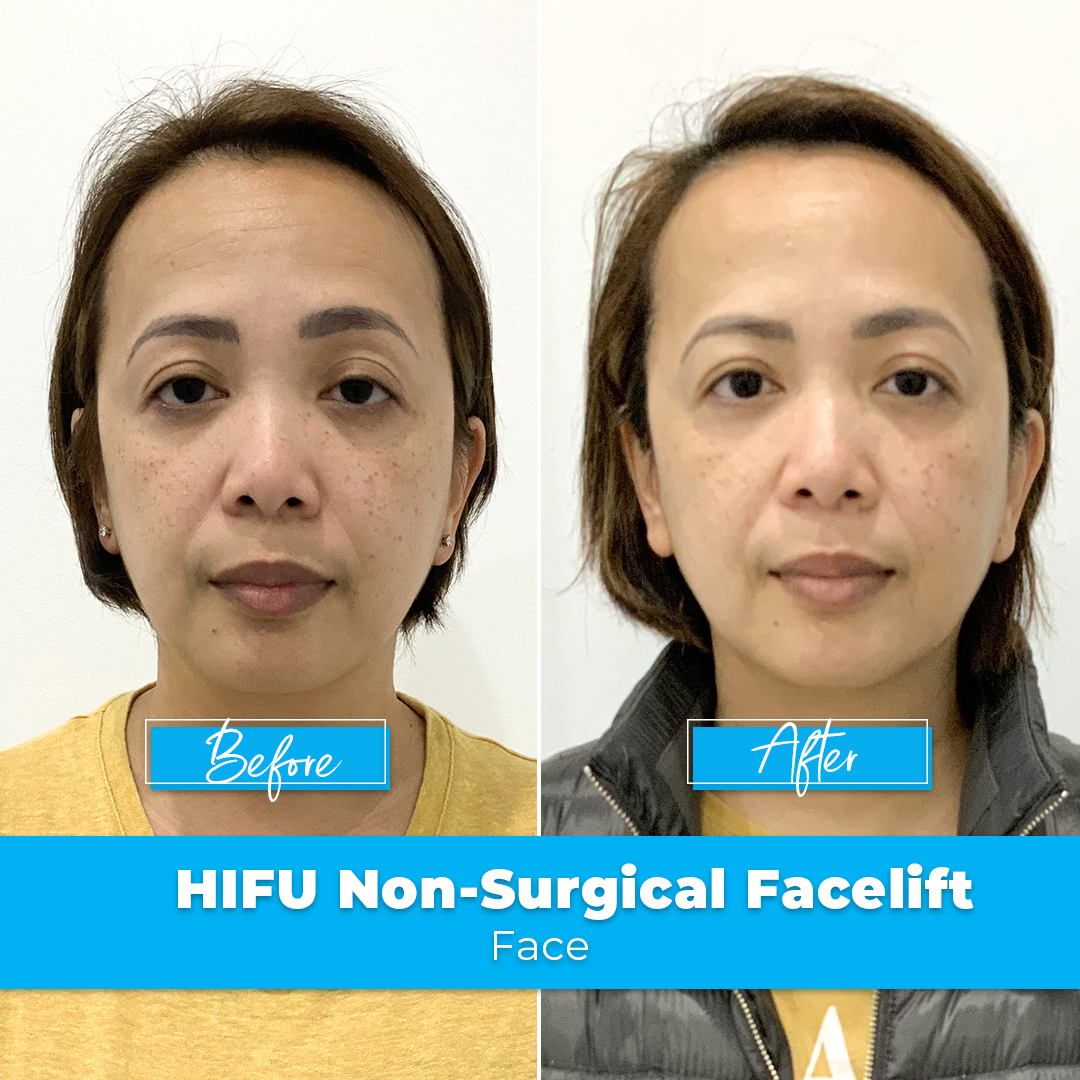
August 30, 2024
Taking Care Of Expectations: Sensible Outcomes From Hifu


A Guide To Non-surgical Face Aesthetic Therapies The therapy area cultivates a calm ambience, where the expert utilizes a handheld tool to direct ultrasound energy exactly to the target locations, such as the jawline, cheek, or neck. Although the experience of warm and mild prickling could be present, the process is generally comfy, with several explaining it as a gentle heat pulsing under their skin. HIFU, or High-Intensity Focused Ultrasound, is a non-invasive treatment that uses ultrasound power to promote collagen production, leading to tighter and stronger skin. People usually experience marginal pain throughout the treatment. Some might really feel a mild tingling feeling or warmth as the ultrasound power passes through the skin. There is no downtime needed after therapy, enabling people to return to daily tasks promptly.
Is Hifu Secure?
Individuals appreciate that HIFU does not need any healing time like medical options do. Observe your skin carefully during the very first few weeks after therapy. If signs and symptoms linger beyond a week, speak with a healthcare expert. Individuals must avoid direct sun exposure after HIFU treatment. While many negative effects are temporary, some signs need attention. If serious pain, long term soreness, or uncommon swelling happens, consult a medical care professional.Post-treatment Care
The ultrasound waves promote the manufacturing of brand-new collagen and elastin. These healthy proteins are important for keeping skin suppleness and flexibility. HIFU skin tightening up treatments highlight accuracy in targeting certain skin midsts. Although HIFU facial is thought about a safe nonsurgical skin tightening up procedure, there are still a couple of potential risks to be familiar with. With its promise of tighter, more youthful-looking skin without the need for surgery, it's not surprising that that many are drawn to this cutting-edge treatment.- It's essential to note that these reactions are usually short-term, resolving on their own within a quick period.
- Let's explore the side effects patients could experience and explore useful pointers for an experience noted more by enjoyment than worry.
- Consequently, establishing reasonable expectations entails understanding and recognizing the function of these personal and environmental factors.
- Preparing the skin for HIFU involves specific support to make the most of the treatment's efficiency and minimize potential reactions.
Why Hifu Therapy Gone Wrong?
Generally, the treatment functions best on people older than 30 with mild-to-moderate skin laxity. As soon as the cells in the targeted area get to a particular temperature level, they experience mobile damages. While this might seem counterintuitive, the damages in fact boosts the cells to create more collagen-- a healthy protein that gives structure to the skin. This issue can often outweigh the enthusiasm for the potential benefits. You may return to normal tasks promptly after the procedure. Tracking progression is important, with temporary and lasting results offering concrete proof of the therapy's efficiency. It starts with a preliminary examination where assumptions are established and customized treatment plans are drafted. Moreover, diving into the world of funding choices can light up paths to make this ingenious therapy a lot more accessible without endangering on top quality or results. However, if the tingling or sensitivity ends up being aggravating or persists for a prolonged duration, it's important to consult with your healthcare provider. With the best expertise and treatment, you can take pleasure in the benefits of HIFU while decreasing the danger of issues. Nevertheless, in a lot more serious instances, medical intervention and even surgical treatment might be called for to address the concern. Pain is one more typical side effect of HIFU and can take place during or after the therapy. Pain might be described as a burning or stinging sensation and can vary from mild to serious. However, closeness to the dental area raises questions concerning prospective indirect impacts. First outcomes can be seen within a few weeks, with continued improvement over 3 to six months as collagen manufacturing boosts. A normal HIFU session lasts between 30 to 90 minutes, depending on the therapy area. The tightening effect will certainly boost over a number of months as collagen develops in the skin. In this short article, we'll dive deep into the globe of HIFU, discovering what takes place Stress Incontinence throughout the treatment, the potential difficulties to keep an eye out for, and what to do if something goes wrong. If you're older with more severe skin sagging and creases, HIFU might not have the ability to remove these skin problems. Eventually, the cost will depend the area being treated and your geographical place, as well as the overall number of sessions needed to accomplish the preferred results. For ideal outcomes you should have 3 treatments, 3 months in between every one. If executed under neighborhood anaesthesia, it is possible that you can head home by yourself.Who can not get HIFU?
The 40's and 50's age group is the most common age for this treatment. You may get this negative effects at periods, for up to 2 months after HIFU therapy. Your area nurse can provide you basic advice about your catheter. You might pass blood, or embolism, in your pee. If this occurs, drink a lot of water and it should clear.
Social Links